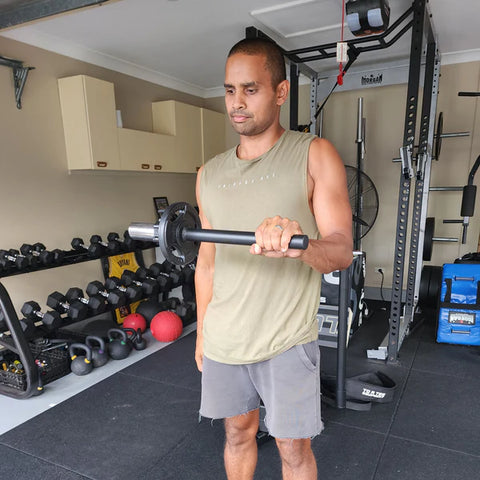
Innovative Uses for the Wrist Bar: Enhance Your Wrist Strength and Flexibility
Explore six innovative exercises using the Wrist Bar to enhance your wrist strength, flexibility,...
When it comes to hip flexor training, most people still think "stretch." But weak, undertrained hip flexors are often the real problem, and they show up in everything from low back pain to poor sprinting mechanics. The Reverse Squat Strap is one of the most effective ways to strengthen this neglected area, but it’s more than just a rehab tool.
Whether you're doing strength training, functional fitness, mobility work or sport-specific prep, this little strap can fit right into your routine, and help you move better, feel stronger, and reduce injury risk long-term
Tired of tight hips during squats and deadlifts? Strengthening your hip flexors with the Reverse Squat Strap balances out all the posterior-chain work you're already doing.
Add reverse squats as an accessory movement at the end of your lower body session; 2–3 sets of 10–15 reps is plenty. It reinforces better hip mechanics, especially for lifters with anterior pelvic tilt or recurring hip pinch.
Recovering from groin, hip, or lower back injuries? Reverse squats are low-impact, spine-friendly, and help reconnect your brain to your hip flexors, which are often "asleep" after injury.
For physios and rehab coaches, this strap is a no-brainer for regaining strength without loading the spine. It’s also great for progressing from isometrics to more dynamic movement.
Speed athletes need powerful hip flexors to drive the knees explosively. But if they’re weak, you’ll see short stride length and compromised acceleration.
Use the Reverse Squat Strap as part of a sprint prep or warm-up; 2–3 quick sets of high-knee drives with control. It’s also useful post-session as a movement primer for recovery days.
Hip mobility isn’t just about passive range, it’s about controlling that range. Reverse squats improve active hip flexion, so you can own those deep positions in your squat, lunge or pistol work.
They also pair well with banded distractions, CARS or controlled eccentrics, giving you a more complete mobility session that translates to strength.
Strengthening your hip flexors has a ripple effect across your entire lower body. You’ll reduce strain on your lower back, stabilise your pelvis during dynamic movement, and create better coordination between the hips and core.
For athletes who’ve had recurring hip, groin or hamstring issues, reverse squats with the strap offer a simple, targeted way to rebuild strength and control from the ground up, literally.
Sometimes the simplest tools offer the biggest payoff. The Reverse Squat Strap is lightweight, portable and brutally effective, whether you're rehabbing, training for performance or just trying to move pain-free.
Don’t leave your hip flexors behind, train them with intent.